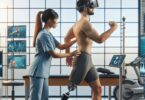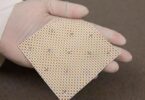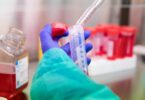A group of scientists from the University of Missouri in Columbia and the Massachusetts Institute of Technology (MIT) in Cambridge, both institutions in the United States, recently assessed the accuracy of a technology developed at MIT that is based on spectroscopy to monitor levels of blood glucose without the traditional needles or with the aforementioned puncture in a finger.
The first results show that this non-invasive technology measures blood glucose levels as effectively as a puncture test, without drawing blood.
The new device tested uses a technique called Raman spectroscopy that is based on the inelastic scattering, or Raman scattering, of monochromatic light, which usually comes from a laser in the visible range, near infrared, or near ultraviolet. This device works through a laser light to measure the chemical composition of the skin and thus determine the amount of glucose in the blood, this without being an invasive technique, ie without the need to prick the finger or by making them intravenously as it is currently done. This device uses a fiber optic cable attached to a wristband transmits a laser light on the skin to detect the different components of this, such as fatty tissue, proteins, collagen and glucose molecules. The wavelength fluctuations associated with the glucose present in the blood create a kind of molecular trace that can be used to investigate their levels.
Those who coexist with diabetes need to accurately monitor blood glucose, to prevent complications related to the disease, such as heart attacks, blindness and coma.
The tests were designed to determine how much glucose is left in the blood and whether the mechanisms of insulin regulation in a patient function effectively.
After checking the results of the analyzes, the team of scientists from the University of Misuricom proved that the spectroscopic technique tested the glucose values as accurately as a finger prick test.
These and other innovations are now possible in Pharmamedic.









